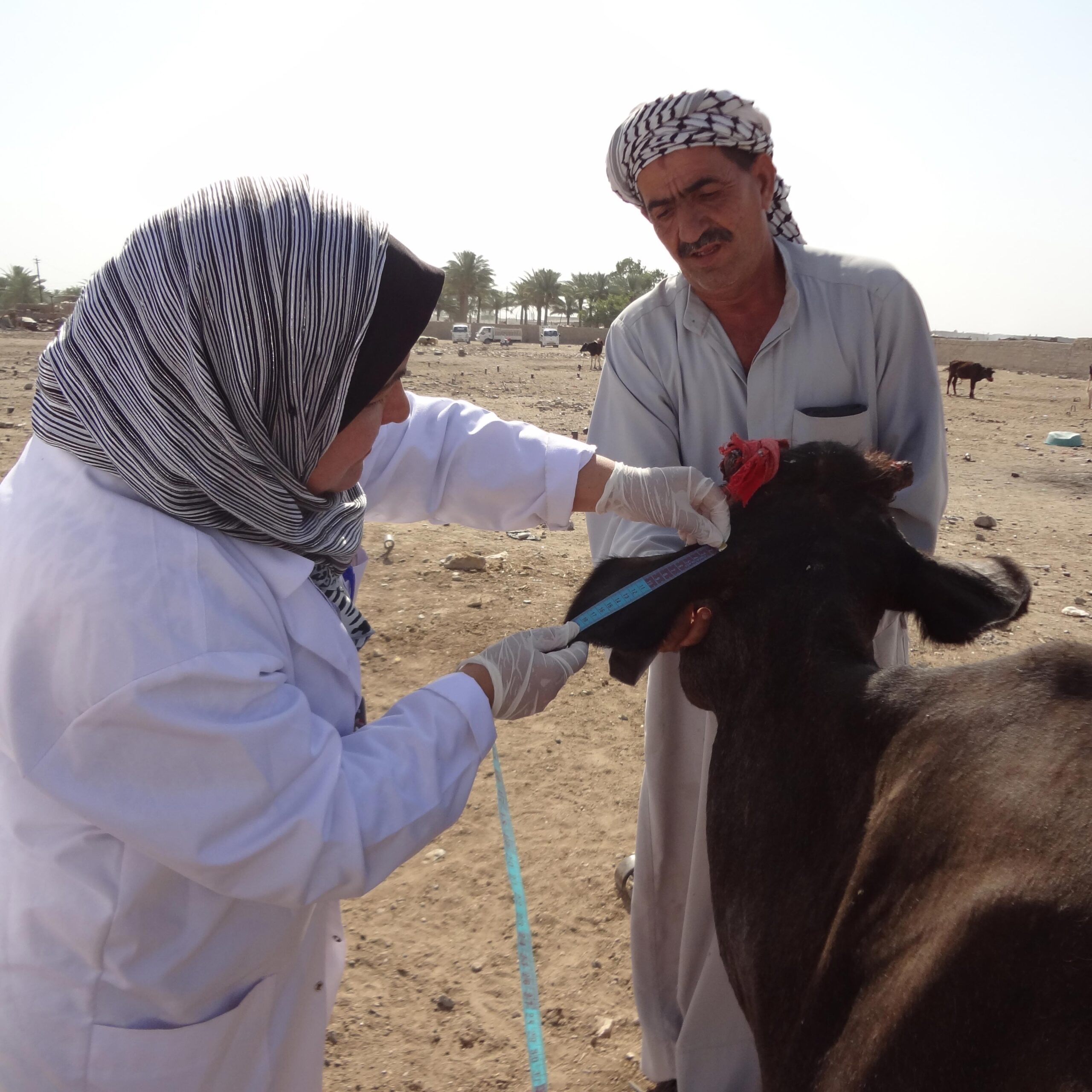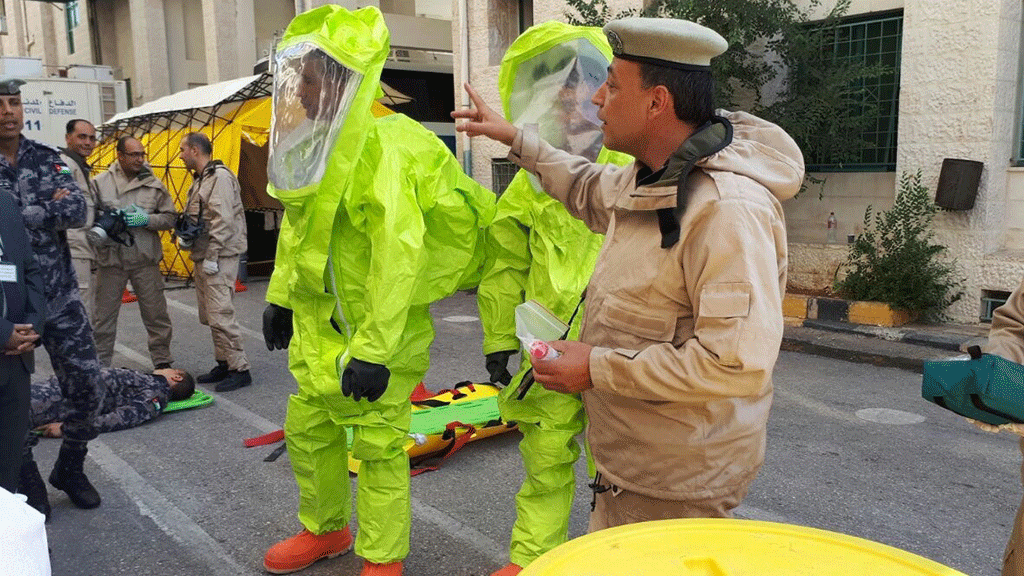What is One Health?

A human-centered approach to infectious disease is like trying to put a puzzle together while missing two thirds of the pieces – no matter how hard you try, you will never get to see the whole picture.
CRDF Global Iraq Science Fellow Dr. Sahar Al-Bayatti [Left] studying animals in Iraq. One Health involves integrating animal, human, and environmental health research to better assess and address the threats of infectious diseases.
Across the planet, approximately 75% of all human infectious diseases have originated from the animal world. What does this mean? That studying and treating diseases when they appear in humans is not enough. One Health aims to fix this problem with the acknowledgement that all health is related – that from plants to animals to humans, every aspect of our well-being is connected.
One Health is an ideology that views global health as an intricately integrated “ecosystem,” with humans, animals, plants, and the environment each acting as unique, but interrelated parts of a single whole. That’s a lot of puzzle pieces, and one individual or even one nation cannot possibly manage or keep track of them. Apart from taking a holistic approach to health, one of the key tenants of One Health is the recognition that creating a healthier world requires the global community at large to support, communicate, and collaborate with one another.
Many infectious diseases start at a point where humans, animals, and the environment meet. Take the recent Zika outbreak as an example of the One Health approach in action. Throughout the Zika outbreak, scientists and researchers have studied the environments where outbreaks have occurred, analyzing plants, water, and geographical features to understand how and why Zika spread. They also studied mosquito’s flight distance, feeding times, preferred habitat, and climatic preferences, which has helped them identify the best means possible for protecting humans from mosquitos preventing the spread of disease.
Knowing specifics about the environment, animals, and people of a region all help inform which actions are best to take. If scientists had focused solely on human to human transmission, for example, they would have missed other valuable information that has been put to good use in stopping the outbreak, namely mosquito behavior and the environmental factors that influence them.
The One Health approach allowed researchers to identify geographical areas not yet touched by the Zika virus to better prepare for the incoming outbreak. Whether that preparation involved placing mosquito traps in key locations or providing bug sprays and netting to at-risk populations, it was a collaborative effort that involved biologists studying the mosquitos, environmental scientists studying the terrain, and public health scientists studying the disease’s impact on humans. All of these experts working together have led to an impressive effort to combat Zika. The number of diverse organizations, experts, and communities that worked together to prevent and respond to the Zika virus is very much indicative of a One Health way of thinking.
The integrated concept of linking together humans, animals, and the environment into one unified method of study can better prepare us for global health threats. As contact between humans and animals continues to expand, the risk of exposure to infectious pathogens – whether new or old – is ever present. Knowing that the climate can influence the intensity of a disease or that the migration of animals can bring unknown pathogens to new areas is very important to consider when evaluating potential risks to the world at large.
One Health is a collective effort of health science professions, biologists, virologists, geologists, environmentalists, to name only a small fraction of participants. Helping bridge the gap by linking experts into communication channels where problems can be examined from all angles will provide not only more solutions, but more robust solutions. One Health is needed to ensure the expansion of collaborative research and finding discoveries that will minimize public health risks for the entire planet. This worldwide strategy of One Health is needed to achieve optimal health for humans, animals, plants, and our environment.



